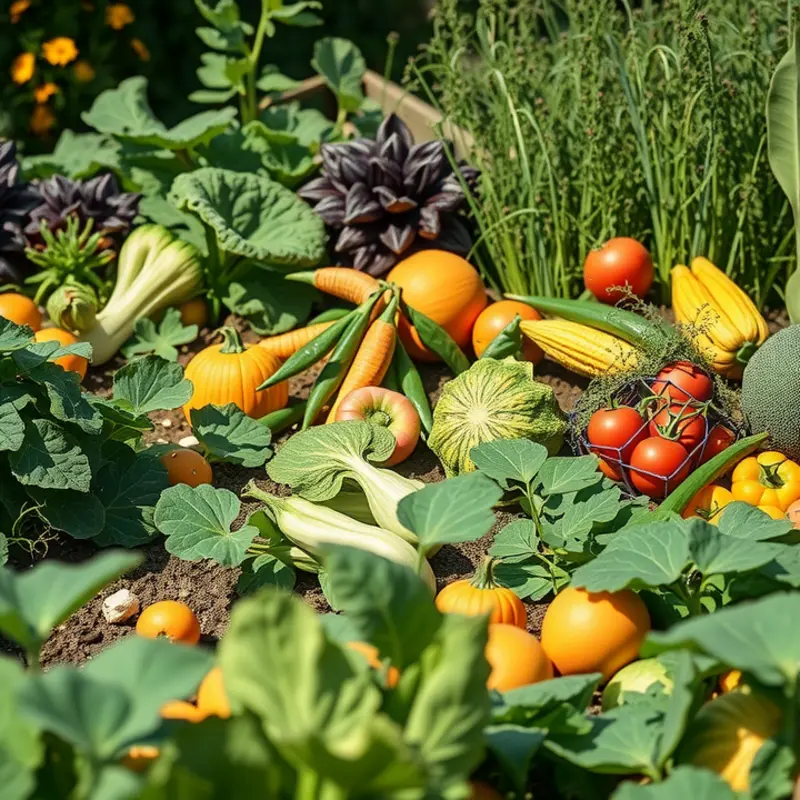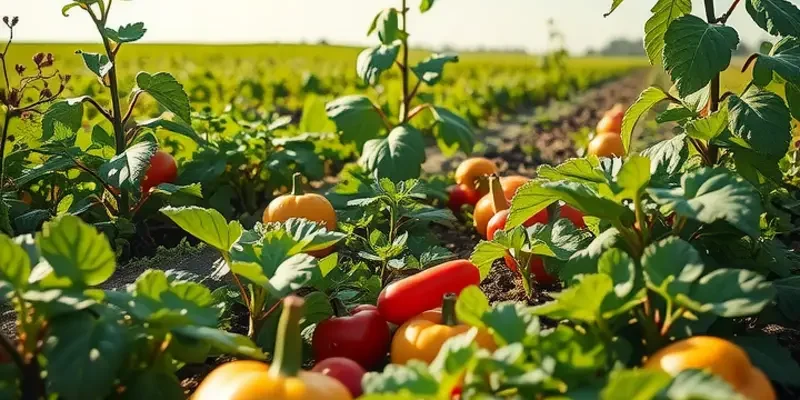Choosing sustainable proteins is key to reducing our ecological footprint. With the global demand for food rising, individual choices can make a significant impact on the environment. From plant-based options to sustainable seafood, we have the power to influence agricultural practices, promote biodiversity, and combat climate change through our daily meals. Let’s explore effective strategies for making eco-friendly protein choices that nourish both our bodies and our planet.
Exploring Sustainable Protein Sources

Protein choices significantly impact our planet’s health. By understanding the environmental toll of various protein sources, we make informed decisions that benefit both the earth and ourselves. Animal-based proteins, though rich in nutrients, generally contribute more to environmental degradation than plant-based alternatives. Producing meat and dairy consumes substantial resources, such as water and feed, while also emitting notable greenhouse gases. In contrast, plant-based proteins present a more sustainable avenue.
Legumes, including lentils, chickpeas, and peas, offer a protein-rich alternative with a minimal ecological footprint. Growing these crops requires less water and land, while also nourishing soil through nitrogen fixation, a process that enriches the earth naturally. Nuts and seeds, such as almonds, walnuts, and chia seeds, provide dense nutritional value and healthy fats. They can be cultivated with innovative practices, reducing water use and improving soil health.
Eco-conscious consumers should consider sustainably-sourced fish as well. Opting for fish from responsible fisheries, which adhere to strict regulations and minimize bycatch, helps maintain marine ecosystems. For guidance, speedy seafood prep ensures delicious meals from responsibly harvested seafood.
Sustainable farming practices are crucial in supporting the shift to eco-friendly proteins. Crop rotation and polycultures, which involve growing multiple types of plants together, improve biodiversity and reduce pest pressures. These practices enable soil to retain nutrients and moisture, diminishing reliance on synthetic fertilizers and pesticides.
Consuming local and seasonal proteins further reduces environmental impacts. Local foods require fewer resources for transportation and storage, cutting down greenhouse gas emissions. Seasonal eating aligns with natural cycles, supporting biodiversity and reducing stress on agricultural systems.
Consider exploring protein-rich grains such as quinoa and amaranth, which grow well under various conditions and require fewer inputs like water and fertilizers. These grains provide essential amino acids while offering versatile options in diverse culinary traditions.
Incorporating these sustainable protein sources into our diets urges a conscientious shift toward more environmentally-aligned eating habits. By thoughtfully selecting legumes, nuts, seeds, sustainably-sourced fish, and seasonal proteins, we lower our ecological footprint while enjoying a diverse and nutritious diet.
Practical Tips for Incorporating Eco-Friendly Proteins

Transitioning to more sustainable protein sources might seem daunting at first, but with some simple adjustments to your habits, it becomes both manageable and rewarding.
When transitioning, begin by incorporating plant-based proteins into your meals. Ingredients like lentils, chickpeas, and quinoa are excellent sources. Consider prepping a large batch of quinoa at the start of the week. This versatile grain can be used in salads, stir-fries, or as a side dish, making it easy to include in various meals.
To enhance ecological sustainability further, try purchasing proteins that are locally produced and in season. Local farmers’ markets often have fresh produce, which is usually more environmentally friendly due to reduced transportation emissions. This approach benefits not only the planet but also your community by supporting local agriculture.
Minimizing food waste is another critical step. Plan your meals to utilize ingredients fully and create a composting system for inevitable scraps. For instance, use vegetable peels for broths, and consider preserving leftovers creatively in soups or stews. Check out this guide on low waste cooking prep for more ideas on reducing waste in the kitchen.
When consuming seafood, it is vital to choose sustainably sourced options. Look for certifications on packaging that indicate environmentally responsible fishing practices. Recognizing these labels helps ensure that you’re contributing to healthier oceans and fish populations.
Exploring a vegetarian or flexitarian diet can significantly reduce your ecological footprint. Start with “meatless Mondays” or similar initiatives that encourage plant-rich meals. Gradually increase the frequency as you become more comfortable with the variety and nutritional adequacy of these meals. If you’re looking for quick ideas, many online platforms offer a plethora of minimal-prep vegetarian recipes that decrease the intimidation of plant-based cooking.
Lastly, educate yourself about common ingredients that boost flavor without needing salt or meat. This can make the transition more enjoyable and dynamic. There are myriad herbs and spices that can elevate a meal, making plant-based dining both satisfying and flavorful.
Adopting these practices not only nurtures the planet but also contributes to a healthier lifestyle. By shifting your protein choices mindfully and adopting a more plant-forward approach, you’re making a profound environmental impact.
Final words
Reducing the ecological footprint of proteins can feel overwhelming, but every small change in your diet makes a difference. Whether you choose to incorporate more plant-based proteins or look for sustainably sourced animal options, your efforts contribute to a healthier planet. Start by trying a new recipe featuring legumes or explore local farmers’ markets for seasonal produce. Remember, every meal is an opportunity to support sustainable practices. Together, we can create a positive impact and inspire others to follow suit.








